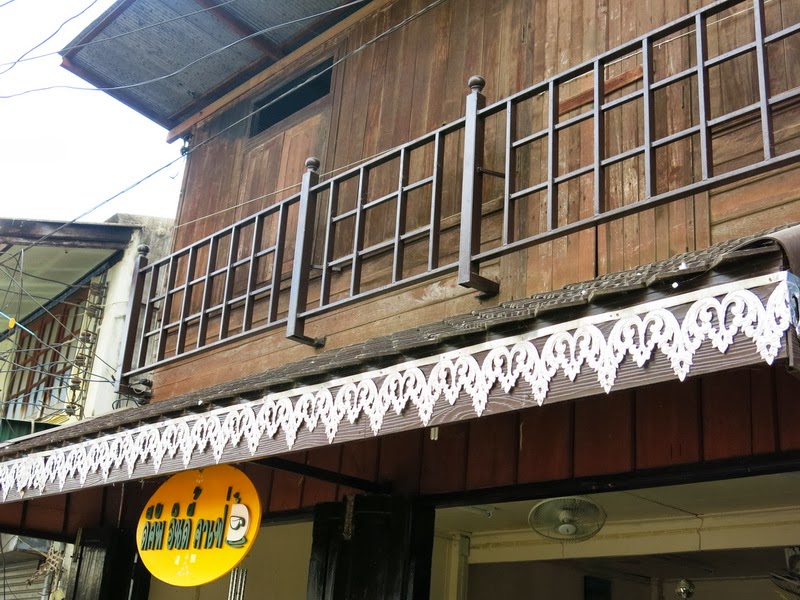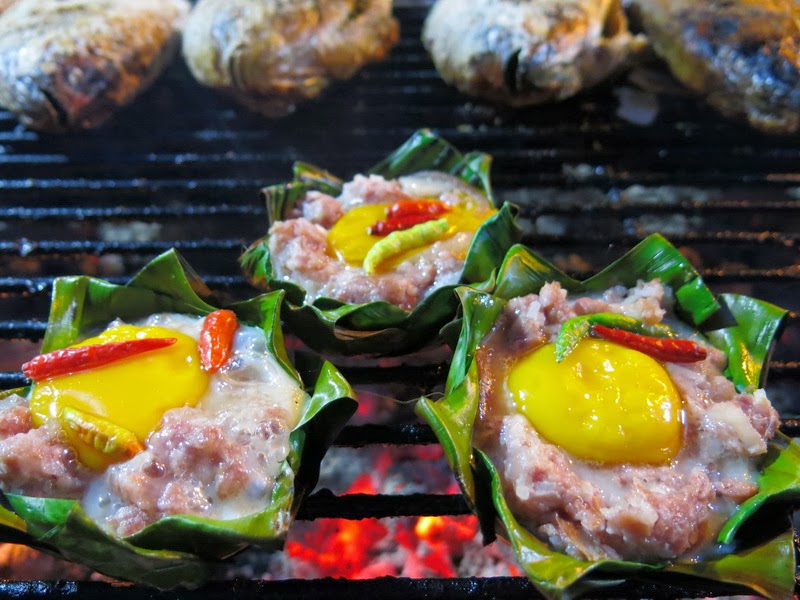 |
| Ta Poh Beach |
Srivijaya Kingdom in Brief
The ancient Srivijaya kingdom spread over
the lower part of the Malay Peninsula and some islands of Indonesia. A stone
inscription written in 1318 B.E. found in Suratthani confirms the Srivijaya kingdom dates to back at least 1,300 years ago.
The kingdom’s strong economy and
constantly extended territory gave an opportunity for art and culture to
prosper to its best. Mahayana Buddhism reigned and the kingdom’s seaside towns
along Malacca Strait turned important trading posts between Chinese merchants
from the east and Indian and Arabian ones from the west of the strait.
Statues of Bodhisattva Buddha,
pieces of Chinese porcelain, and Indian found scattering the coast of the Malay Peninsula have helped the archaeologists completed the picture of the kingdom. Among those important sites
the archaeologists still work on unearthing similar objects are Thailand’s
southern provinces especially Chaiya district of Suratthani.
Discovering It
As we arrived in
Suratthani, Phra
Borom That Chaiya Chedi
was the first site we visited for our journey back through time. Phra Borom That Chaiya serves as a
fine example of Srivijaya's influence on religious architecture. The chedi now
houses Buddha relics and is one of the most important landmarks of the city. In the courtyard
of the chedi, sculptures and Buddha images made from sandstones date back to
the Ayutthaya period, 400 years ago.
Then we left the chedi and headed out to
Chaiya district. After an hour we arrived in Phum Riang, a cozy and quiet
Muslim village which was the city center before the proper province’s map was
drawn and the present downtown was settled. Suratthani’s first cinema is one of
the remnants from the era. A fire caught the building that now leaves only the
ghostly structure. It reminded me of a movie setting.
Anyway, we didn’t come here for a movie. Phum
Riang Village is famous for silk weaving, the tradition passed down over
hundreds of years. Silk weaving was one of
the industries apart from fishing and rice farming brought by Muslim people
resettling 400 years ago from Ayutthaya kingdom north of Bangkok. Female
villagers weaved cloth with Chinese silk threads which were later transported
in Chinese junks to be sold in other regions, lending the village fame as a
center of fine silk weaving. The weavers now use threads from Japan and local
silkworm farms, completing the tasks with the unrivaled skills that been passed
on from their older generations
The old-fashioned looms
here are the same style used by hand-weaving industry nationwide. To one
corner, I found an even more traditional loom now stands as an object of
exhibition. Dust indicated it had been retired. I was told, in the earlier days
this loom produced much more complicated and detailed patterns. It’s sad the
ladies who really knew how to use it aren’t here anymore.
Auntine Wanma, the unofficial leader of the
weaving village showed me the complete cloth of different patterns. A cloth can take up from 2 days to 2 months to
complete depending on how complicated the patterns are. It seemed that all the
painstaking process pays off, if not with the payment, then it must be with the
impression they create to anyone who hold these cloth in their hands. All of
them were simply beautiful.
The auntie started weaving as young as 15. Now
65, she finds it hard to sit her granddaughters or nieces down and repeat the
teaching process her granny did to her. She used to own almost a hundred looms
in her shop. Now there are only 25 left as the weavers get too old and there
isn’t much demand in the market any more. Auntie Wanma isn’t sure about the
future of her shop, and none was the other few shop owners in the area.
Ta Poh Beach is a
walkable distance from the village. We got there just in time to see fishermen
leaving and coming back for their night and day catches. And while some of the
catches go to the nearby wet markets, some are left on stalls for the local who
prefer their dinner to still be alive.
Apart from hosting a big
seafood market on weekends, Ta Poh preserves historical significance as an
ancient port from Srivijaya to Ayutthaya periods.
Indian, Arabian, and Chinese junks stopped here, traded, and also reloaded
fresh water from the wells which are now dotting the park and area along the
coast.
And as if bumping into some ancient wells in
random places wasn’t cool enough, we strolled on the beach and found even more
surprising pieces from the history. Shells and bio trashes are not the only
things brought here by the waves, pieces of porcelains from sunk junks years
ago managed to make their way to this beach as well.
As the sun started to
disappeared, we were surrounded only by local families chilling out on the
beach and in the park. The only sounds that broke the silence around us were
the kids’ laughers and the fisherman boats’ engines. Ta Poh doesn’t have the
turquoise water and chilling-out bars to impress me, but why would I want those
when it was such as privilege to get to soak up the serenity and almost had the
beach all to myself?
Send me comments: https://www.facebook.com/suwida.boonyatistarn.1
Watch the story's video: http://www.youtube.com/watch?v=sM-iS3C15pg
See more images of the story: http://www.flickr.com/photos/92886568@N08/sets/72157639959757345/



































